
Películas atípicas de una infancia atípica.
Nuevamente regreso a mi niñez y es por una sencilla razón, creo que hay algunos relatos que son curiosos, originales, y que valen la pena ser contados.
Hoy les traigo las 5 películas más importantes de mi infancia y las razones por las que quedaron en mi memoria para siempre. Son películas un tanto distintas a las que veían (por ejemplo) mis compañeros de clases, mis primos, y eso se debía al entorno en el cual se desempeñaba mi familia, siendo principalmente el teatro y rodeados frecuentemente de amigos dedicados a las distintas artes.
Again I return to my childhood and it is for a simple reason, I think there are somestories that are curious, original, and worth to be told. Today I bring you the 5 most important movies of my childhood and the reasons why they stayed in my memory forever. They are movies somewhat different from those that my classmates, my cousins, watched (for example), and that was due to the environment in which my family worked, being mainly the theater and often surrounded by friends dedicated to the different arts.

Fantasía / Fantasy 1940
USA
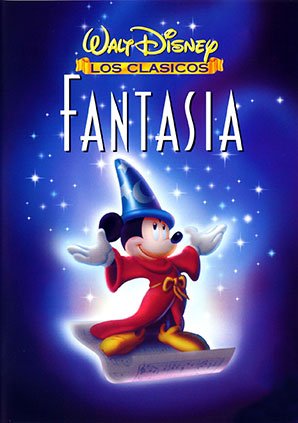
Fuente de imagen / Image source
Ésta película de Walt Disney es la primera que les presento y les cuento que la primera vez que la vi me encantó la música y cómo las figuras y los objetos bailaban al ritmo de varias de las más famosas piezas clásicas (muchas de ellas eran escuchadas en mi casa), el movimiento y el color, a pesar de ser una película bastante oscura, hacían que uno permaneciera como hipnotizado. Recuerdo especialmente las siguientes escenas: La danza de las horas , música de Amilcare Ponchielli (compositor italiano 1834-1886) Y a pesar de siempre provocarnos susto, también es impresionante la escena de This Walt Disney film is the first one I present to you and I tell you that the first time I saw it I loved the music and how the figures and objects danced to the rhythm of several of the most famous classical pieces (many of them were heard in my house), the movement and color, despite being a rather dark film, made one remain as if hypnotized. I especially remember the following scenes: The Dance of the Hours , music by Amilcare Ponchielli (Italian composer 1834-1886). And despite always scaring us, it is also impressive the scene of. Reseña Su composición supuso un trabajo experimental sin diálogos (salvo las breves intervenciones del director de orquesta y Mickey Mouse) cuyo objetivo es ilustrar o acompañar con la animación temas de música clásica. Se interpretan ocho piezas musicales, ejecutadas la mayoría de ellas por la orquesta de Filadelfia dirigida por Leopold Stokowski, que acompaña a siete secuencias de animación. Para muchos es una obra de arte de un género nuevo, un puente entre las artes y una «forma de presentar el arte». La banda de sonido fue grabada usando múltiples canales de audio y reproducida mediante el sistema Fantasound,1 que hizo que Fantasía fuera una de las primeras películas de exhibición comercial con sonido estereofónico. En 1990, la película fue considerada «cultural, histórica y estéticamente significativa» por la Biblioteca del Congreso de Estados Unidos y seleccionada para su preservación en el National Film Registry y es reconocida como una obra clásica de la animación. Review Its composition was an experimental work without dialogue (except for the brief interventions of the orchestra conductor and Mickey Mouse) whose purpose is to illustrate or accompany classical music themes with animation. Eight musical pieces are performed, most of them by the Philadelphia Orchestra conducted by Leopold Stokowski, accompanying seven animation sequences. For many it is a work of art of a new genre, a bridge between the arts and a "way of presenting art". The soundtrack was recorded using multiple audio channels and reproduced using the Fantasound system,1 which made Fantasia one of the first commercially screened films with stereophonic sound. In 1990, the film was deemed "culturally, historically and aesthetically significant" by the Library of Congress and selected for preservation in the National Film Registry and is recognized as a classic work of animation.
Para mí fue una bellísima película, y por esa razón volvimos al cine para verla nuevamente.
El aprendíz de brujo con música de Paul Dukas (compositor francés 1865-1935). Es una locura!
https://www.youtube.com/watch?v=9Nb-0nvA16M
https://www.youtube.com/watch?v=jxWX52iwdYU Fragmento
Una noche en el monte pelado del compositor ruso Modest Músorgski (1839-1865)
https://www.youtube.com/watch?v=SLCuL-K39eQ
For me it was a beautiful film, and for that reason we went back to the cinema to see it again.
The Sorcerer's Apprentice with music by Paul Dukas (French composer 1865-1935). It's crazy!
https://www.youtube.com/watch?v=9Nb-0nvA16M
https://www.youtube.com/watch?v=jxWX52iwdYU Fragment
A Night on the Bare Mountain by Russian composer Modest Músorgski (1839-1865).
https://www.youtube.com/watch?v=SLCuL-K39eQ

Seriosha 1960
URSS (Russia)
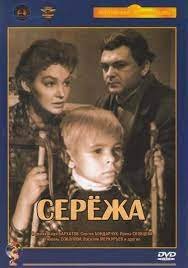
Fuente de imagen / Image source
Seriosha es la primera película del director ruso Georgiy Daneliya.
Ir a ver una película rusa en esa época ya era una novedad, recuerdo perfectamente la primera vez que la vimos, una película en blanco y negro, un drama, era muy triste, tan triste que todos lloramos, pero nos encantó el niño Seriosha, quien daba lástima cómo era burlado por su tío. La escena final es tremendamente dramática y emotiva.
Seriosha trata del mundo visto a través de los ojos de un niño.
Cuando dije que recordaba perfectamente la primera vez que la vimos (mi papá, mi mamá, mi hermano y yo) es porque sentimos el deseo de verla nuevamente, y por supuesto, la segunda vez fuimos preparados con pañuelos y volvimos a llorar.
Esta conmovedora película se quedó presente en mi memoria.
Seriosha is the first film of the Russian director Georgiy Daneliya.
Going to see a Russian film at that time was already a novelty, I remember perfectly the first time we saw it, a black and white film, a drama, it was very sad, so sad that we all cried, but we loved the child Seriosha, who was pitiful how he was mocked by his uncle. The final scene is tremendously dramatic and emotional.
*Seriosha is about the world as seen through the eyes of a child.
When I said I remembered perfectly the first time we saw it (my dad, mom, brother and I) it is because we felt the desire to see it again, and of course, the second time we were prepared with tissues and cried again.
This touching movie stayed present in my memory.
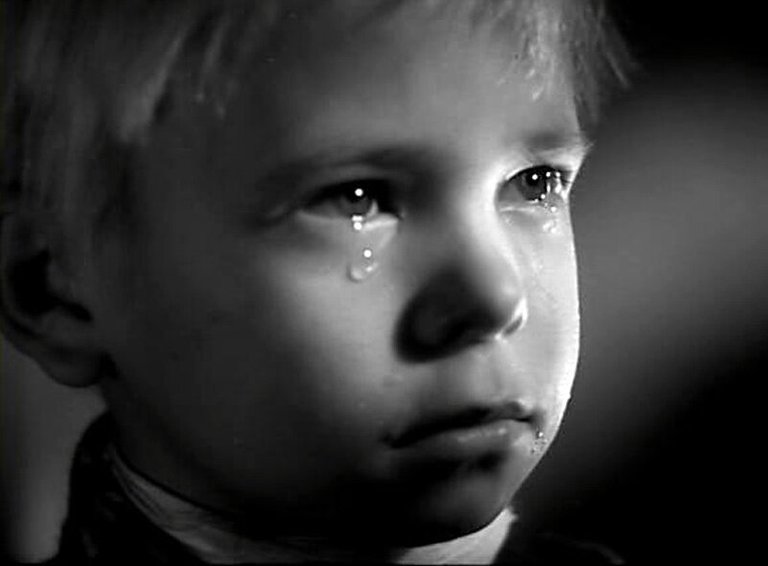 | 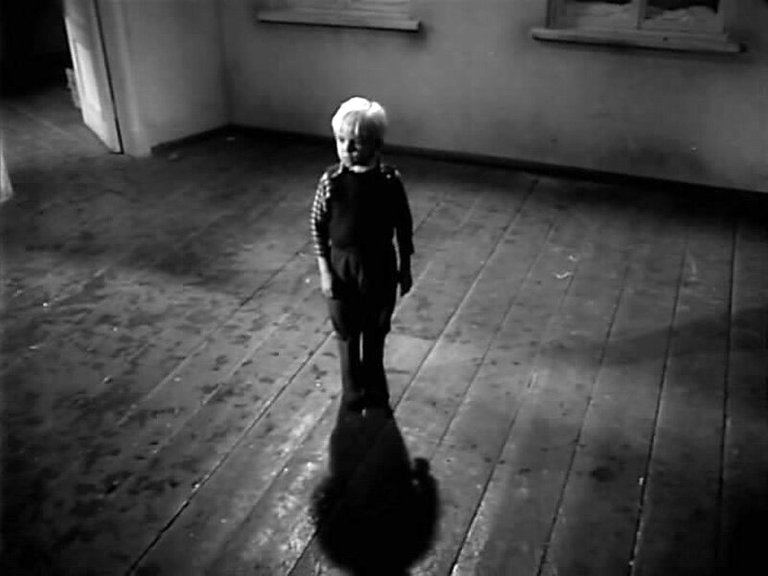 | 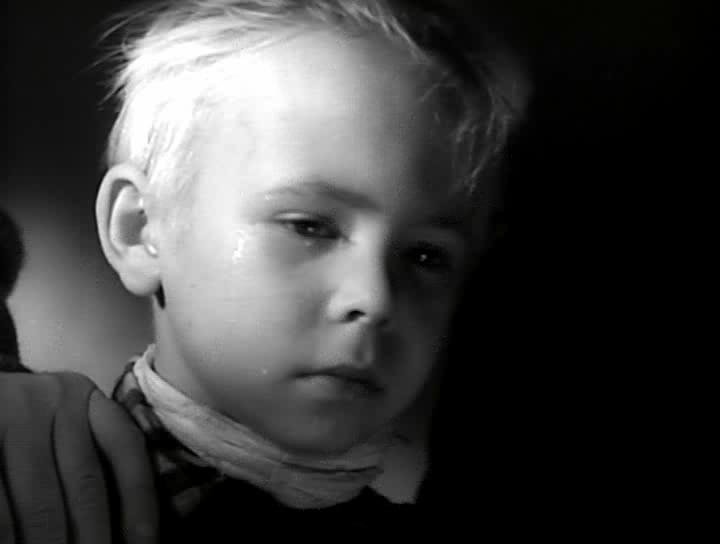 |
|---|
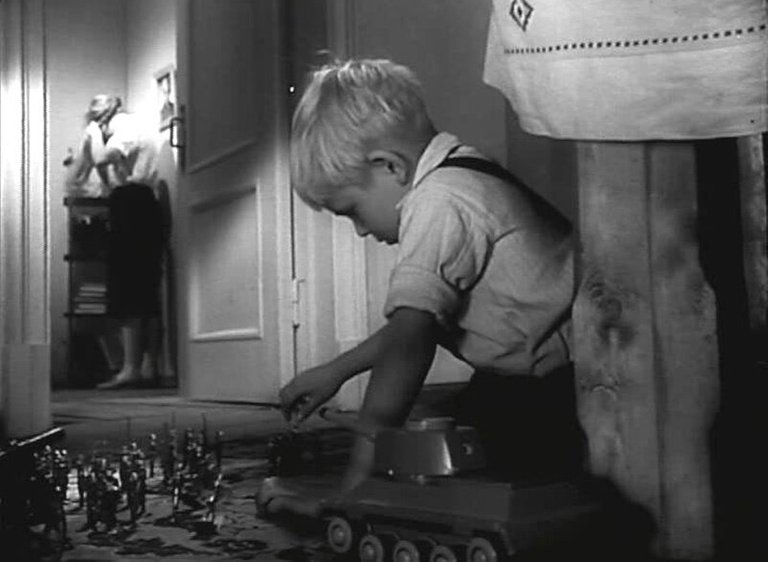 | 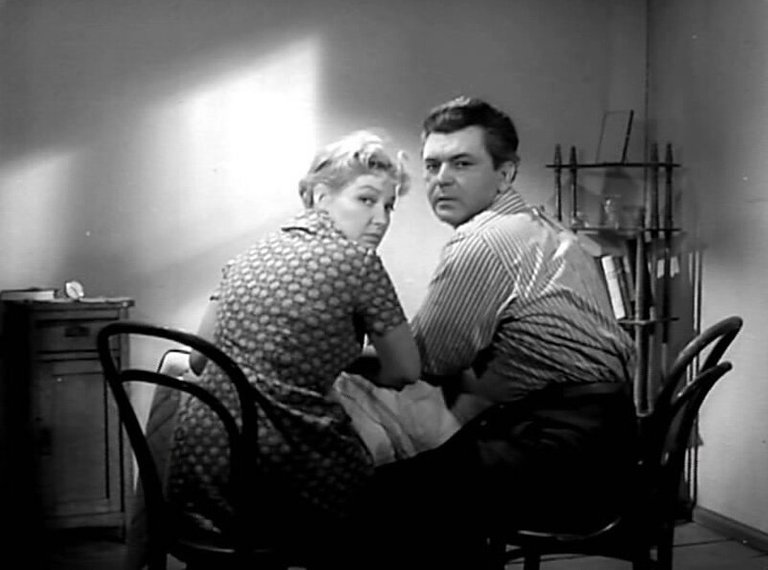 | 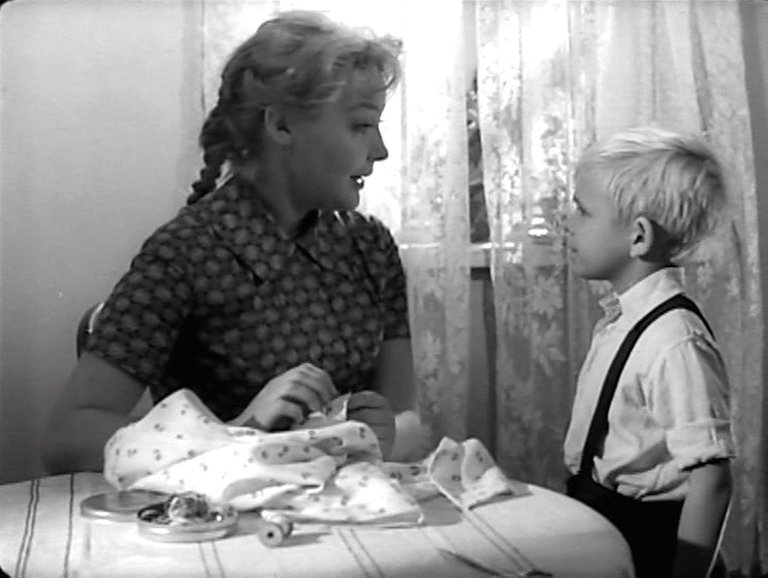 |
|---|
Fuente de imágenes / Fuente imágenes / Source of images / Source of images
Sinopsis
La madre de Sergei, quien tiene cinco años, se ha vuelto a casar, y ahora Dmitry Korostelyovitch Korostelyov se ha convertido en su padre. El niño le llama por su apellido Korostelyov, ya que su padrastro se convierte en su mejor amigo, ayuda al niño a resolver pequeños pero muy importantes problemas para Sergei. Korostelyov hace realidad el mayor sueño del niño al comprarle una bicicleta. Cuando esperado un bebé en la familia, Korostelyov y Sergei conversan y discuten los planes para el futuro.
La aparición de su hermano pequeño, Lyonya, acapara toda la atención y las preocupaciones de su madre y Sergei comienza a sentirse solo y abandonado. Además, sus padres deben trasladarse a otra ciudad (Kholmogory, región de Archangelsk) por un nuevo trabajo de su padrastro, pero debido a la dolencia de garganta de Sergei, deciden dejarlo por un tiempo con una vecina, pero de repente todo se resuelve felizmente el día de la partida ...
Por un lado, la película quiere dejar el mensaje de que "para los hombres, no hay niños extraños".
Synopsis
Sergei's mother, who is five years old, has remarried, and now Dmitry Korostelyovitch Korostelyov has become his father. The boy calls him by his surname Korostelyov, as his stepfather becomes his best friend, helps the boy to solve small but very important problems for Sergei. Korostelyov makes the boy's biggest dream come true by buying him a bicycle. When a baby is expected in the family, Korostelyov and Sergei talk and discuss plans for the future.
The appearance of his little brother, Lyonya, takes all his mother's attention and worries, and Sergei begins to feel lonely and abandoned. In addition, his parents have to move to another city (Kholmogory, Archangelsk region) because of a new job of his stepfather, but because of Sergei's throat ailment, they decide to leave him for a while with a neighbor, but suddenly everything is happily resolved on the day of departure ...
On the one hand, the film wants to leave the message that "for men, there are no strange children".

Un día un gato 1963
One day a cat
(El gato de Cassandra /Cassandra's cat)
Checoeslovaquia (República Checa /Czech Republic)
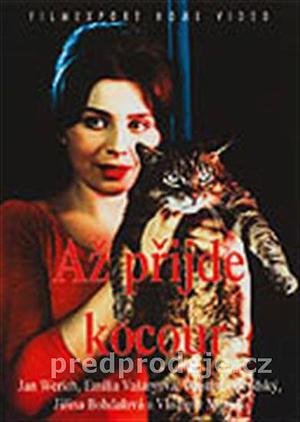
Fuente de imagen / Image source
Un día un gato es una película del director checo Vojtech Jasný.
Es una película muy bonita con una increíble historia, una película mágica, donde definitivamente lo que más me emocionaba era cómo el gato (que siempre llevaba unos lentes puestos) podía ver sin los lentes a todas las personas de distintos colores, cada color de acuerdo a su manera de ser, de pensar, de actuar, si era bueno o si era malo, eso me parecía increíble.
One day a cat is a film by Czech director Vojtech Jasný.
It's a very nice movie with an incredible story, a magical movie, where definitely what excited me the most was how the cat (who always wore glasses) could see without the glasses all the people in different colors, each color according to their way of being, thinking, acting, if they were good or if they were bad, that seemed incredible to me.

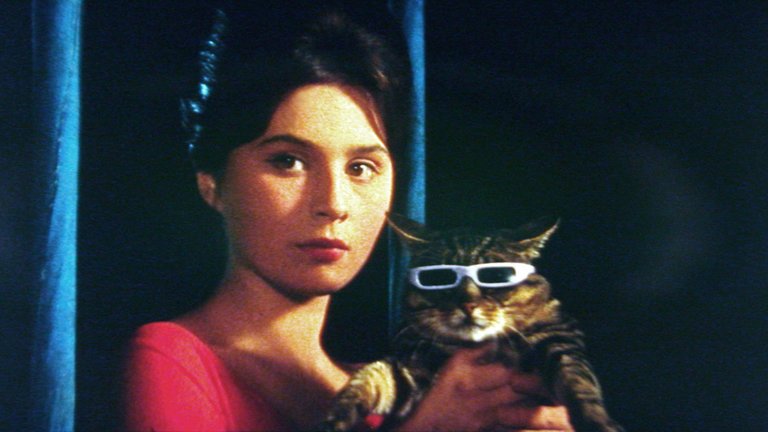
Fuente de imágenes / Image source
Sinopsis
Un cuento para niños de pronto se vuelve realidad: un día llega al pueblo un circo (que no se parece a los circos tradicionales sino más bien al Teatro Negro de Praga) y trae un gato con anteojos. El cuento dice que no hay que quitárselos, porque sin los anteojos el gato en cuestión hace que las personas se vean teñidas de colores y así los hipócritas, los ladrones, los mentirosos, los infieles y los enamorados tienen cada uno un color particular. Esta fábula humorística, cuyos recursos expresivos anticipan algunos años a la psicodelia, es uno de los films fantásticos más originales que ha dado el cine y también es uno de los más bellos, en buena medida gracias a la luminosa presencia de Emilia Vásáryova.
Synopsis
A children's story suddenly becomes reality: one day a circus (which does not resemble traditional circuses but rather the Black Theater of Prague) arrives in town and brings a cat with glasses. The story says that one should not take them off, because without the glasses the cat in question makes people look colored and so hypocrites, thieves, liars, unfaithful people and people in love each have a particular color. This humorous fable, whose expressive resources anticipate psychedelia by a few years, is one of the most original fantastic films ever made and also one of the most beautiful, largely thanks to the luminous presence of Emilia Vásáryova.

Al maestro con cariño (1967)
To Sir, with love
Reino Unido / UK
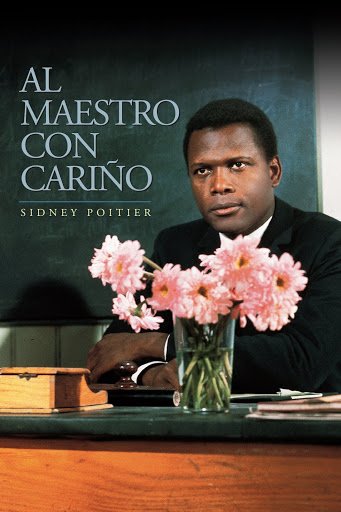
Fuente de imagen /Image source
Al maestro con cariño fue dirigida por el director británico James Clavell.
Hubo dos cosas que me enamoraron de ésta película, primero que nada la canción principal, el tema de la película y la actuación de Sidney Poitier. Al salir del cine aún tenía la melodía en mi cabeza y más nunca la olvidé, y a Sidney Poitier después (con el tiempo) lo empecé a seguir, a buscar otras de las tantas películas que protagonizó, razón por la cual posteriormente obtuvo 2 Premios Oscar. Yo salí enamorada de ésta película que fui a ver acompañada de mi mamá.
To the master with love was directed by British director James Clavell.
There were two things that made me fall in love with this movie, first of all the theme song, the theme of the movie and the performance of Sidney Poitier. When I left the theater I still had the melody in my head and I never forgot it, and Sidney Poitier later (with time) I started following him, looking for other films he starred in, which is why he later won 2 Oscars. I came out in love with this movie that I went to see with my mother.
Sinopsis
Un ingeniero de raza negra en paro, llamado Mark Thackeray, encuentra trabajo como profesor de un grupo de estudiantes conflictivos en una escuela de las afueras de Londres. Pero detrás de la ruda y grosera apariencia de sus alumnos no hay malos sentimientos. Al principio Mark intenta ganarse su confianza utilizando métodos tradicionales, pero el fracaso es tal que no duda en buscar nuevas estrategias educativas.
Synopsis
An unemployed black engineer named Mark Thackeray finds work as a teacher of a group of troubled students at a school on the outskirts of London. But behind the rude and uncouth appearance of his students there are no bad feelings. At first Mark tries to gain their trust using traditional methods, but such is the failure that he does not hesitate to seek new educational strategies.

Oliver 1968
Reino Unido / UK
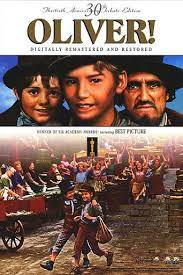
Image source / Fuente de la imagen
Oliver es una hermosísima película musical dirigida por el británico Carol Reed, y fue merecedora de 6 Premios Oscar, de las 11 nominaciones que tuvo.
Quién podría no amar ésta película? Es un musical espectacular!
El pequeño Oliver nos enamora desde el principio con ese hermoso rostro lleno de simpatía y de dulzura, y su compañero de fechorías era un chico genial! Sus actuaciónes, sus bailes y su gracia los volvieron inolvidables.
El viejo Fagin es toda una estrella que se roba el show convirtiéndose en el villano más querido, y yo disfruté un montón la actuación del malvado Oliver Reed. La ambientación de la película, la música, los bailes, la escenografía y el vestuario son preciosos.
Oliver siempre hace vibrar mi corazón.
Oliver is a beautiful musical film directed by the British Carol Reed, and it won 6 Oscar Awards, out of the 11 nominations it had.
Who could not love this movie? It is a spectacular musical!
Little Oliver wins us over from the beginning with that beautiful face full of sympathy and sweetness, and his partner in crime was a great guy! Their performances, their dances and their grace made them unforgettable.
Old Fagin is a star who steals the show by becoming the most beloved villain, and I thoroughly enjoyed the performance of the evil Oliver Reed. The film's setting, music, dances, set design and costumes are gorgeous.
Oliver always makes my heart flutter.
Sinopsis
Inglaterra, siglo XIX. Oliver Twist (Mark Lester) es un pobre niño que escapa de un orfanato y llega a Londres en busca de fortuna. Allí tiene la mala suerte de ser reclutado por un granuja llamado Fagin (Ron Moody), jefe de una banda de jóvenes ladronzuelos que roban a los transeúntes. Adaptación en formato musical de la famosa obra de Dickens.
Fuente de texto
Synopsis.
England, 19th century. Oliver Twist (Mark Lester) is a poor boy who escapes from an orphanage and arrives in London in search of fortune. There he has the misfortune of being recruited by a rogue named Fagin (Ron Moody), head of a gang of young petty thieves who rob passers-by. Musical adaptation of Dickens' famous work.
Text source
Para despedir éste post, quise dejarles ésta hermosa canción cantada por Oliver con una coreografía y ambientación espectaculares.
Espero hayan disfrutado de mi pequeño recorrido por las 5 películas más significativas de mi infancia.
To say goodbye to this post, I wanted to leave you with this beautiful song sung by Oliver with a spectacular choreography and setting.
I hope you enjoyed my little tour through the 5 most significant movies of my childhood.

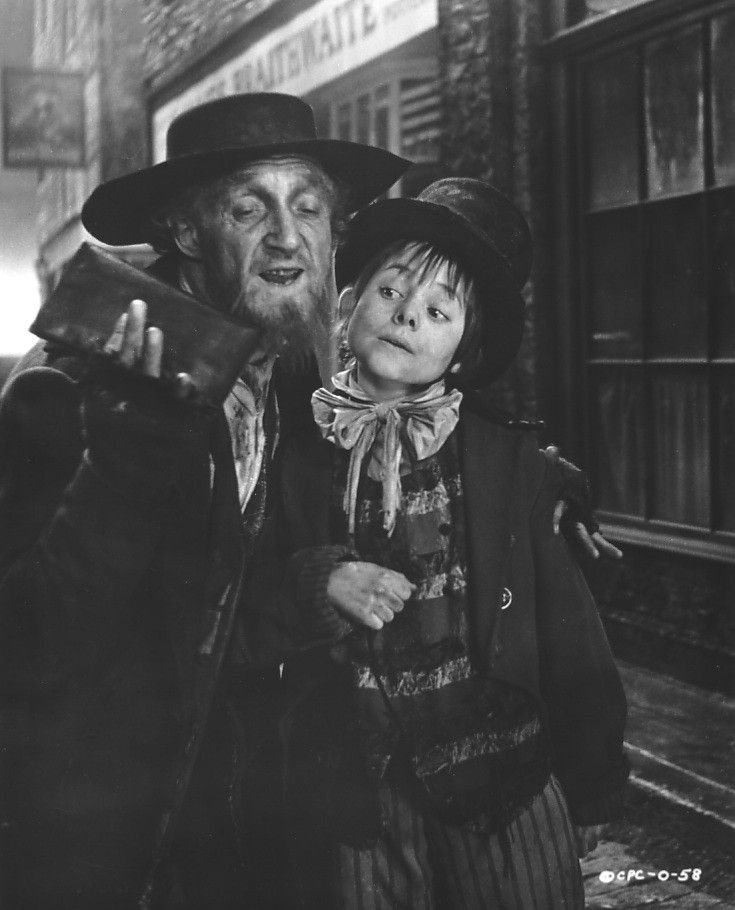
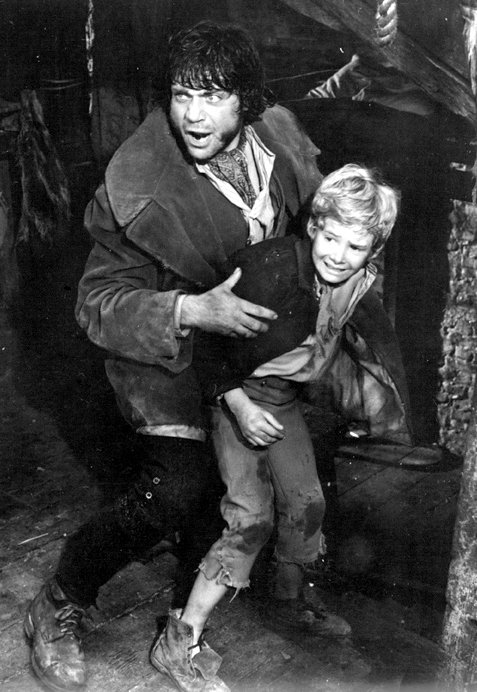
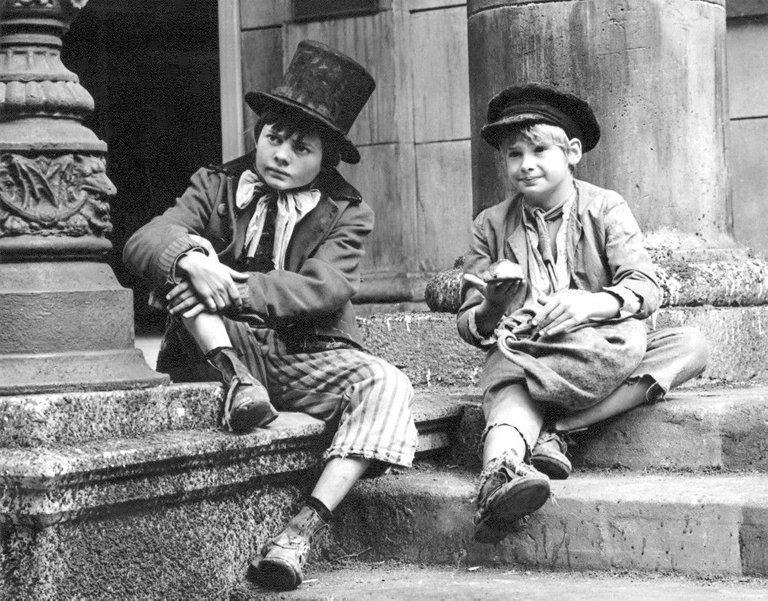

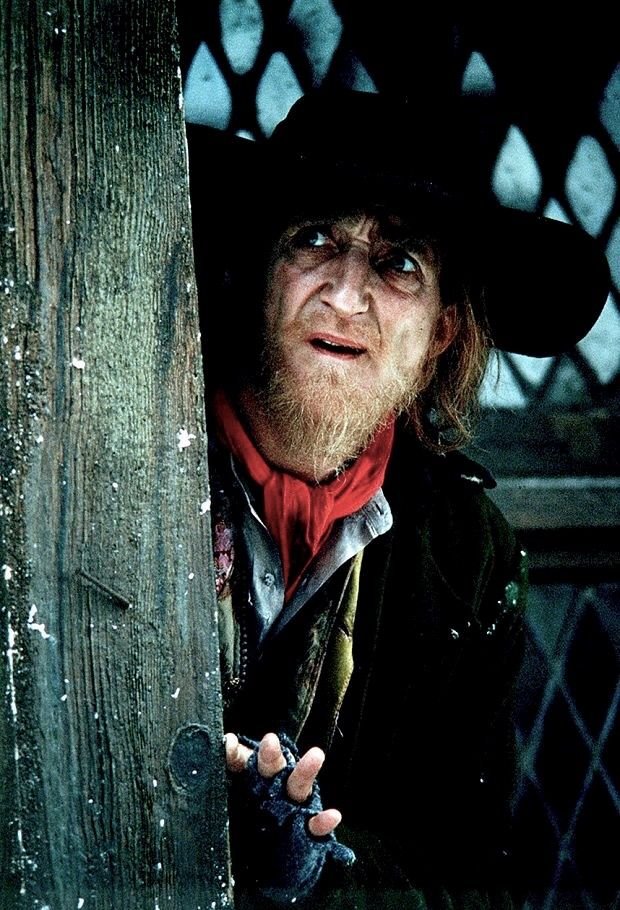
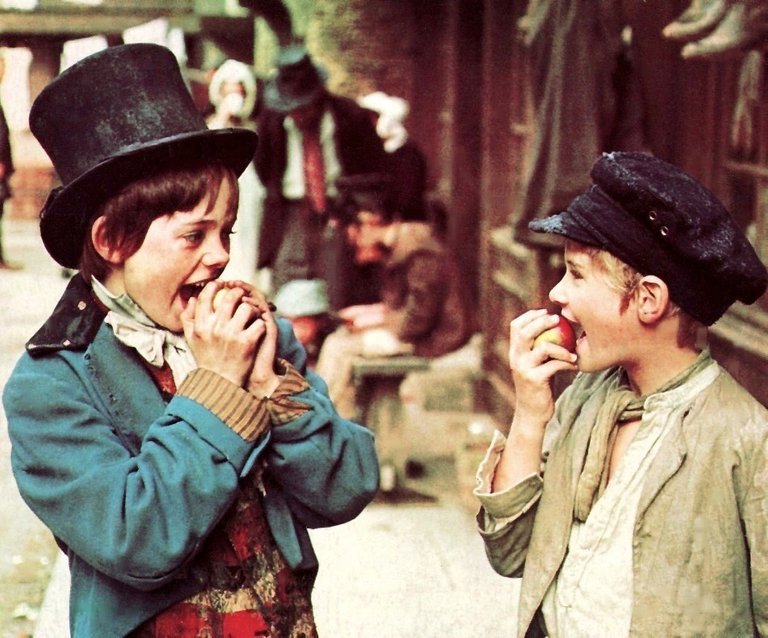
Congratulations @helyorsini! You have completed the following achievement on the Hive blockchain and have been rewarded with new badge(s) :
Your next target is to reach 19000 upvotes.
You can view your badges on your board and compare yourself to others in the Ranking
If you no longer want to receive notifications, reply to this comment with the word
STOPCheck out the last post from @hivebuzz:
Support the HiveBuzz project. Vote for our proposal!